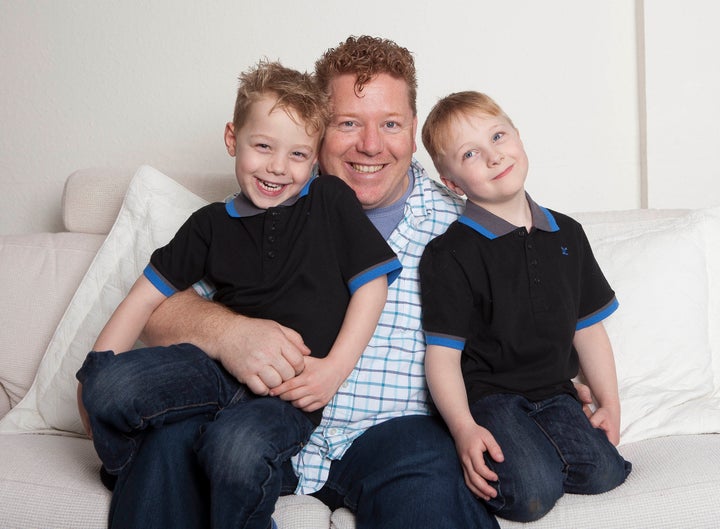
In Norway 97 percent of fathers take daddy leave. The expectations are high, but does it lead to gender equality?
As a family researcher from Norway doing research on men, work and family, I often find myself trying to dissuade other family researchers and policymakers, both at home and abroad, from the high hopes they place in this particular policy measure as a tool of gender equality. This piece is the result of many encounters with daddy leave enthusiasts, and my efforts to bring some evidence and critical perspectives into the discussion.
As the first country in the world to do so, Norway introduced a non-transferable paternal quota of parental leave in 1993. It was then four weeks and came with a substantial expansion of parental leave to 42 weeks. Parental leave in Norway is state-paid with full wage compensation up to a fairly high ceiling. In recent years the quota for fathers has been substantially expanded to 12 weeks of a total of 47. In addition to their share of parental leave, Norwegian fathers are entitled to a two weeks paternity leave following the birth of a child.
Researchers of family and gender equality, as well as many policymakers world-wide, look with envy to Norway and to the other Nordic countries' family and gender equality policies. Among these the paternal quota is by many seen as the most promising policy measure in the pursuit of gender equality, and as an important move towards more egalitarian patterns of work and care.
The underlying expectation is that fathers' leave will have a lasting effect on the sharing of household work within families, thereby allowing women to increase their labor market participation, and leading to men taking a greater responsibility for everyday care in the long term.
The paternity leave is further expected to lead to a redistribution of the "care penalty" in the labor market, based on the idea that men, too, will increasingly be seen by employers as both parents and workers.
So what is the evidence after almost 20 years of paternal quota? As a policy intervention, it has been a spectacular success; within a few years after the introduction of the quota, 85 percent of fathers used their rights. In 2008, 97 percent of men who were entitled to leave took (some) leave. Despite the impressive uptake rates, measured against the stated aim of the quota, the promotion of more egalitarian patterns of work and care, and a lessening of the gender pay gap, the expectations by far exceed the evidence.
There is little evidence of paternity leave leading to men taking a more equal share of domestic work. Neither has the introduction of daddy leave led to more equal pay. Rather the opposite, according to a large, longitudinal study of the effects of paternal leave at the University of Oslo, recently found that fathers' leave had had an adverse impact on mothers' earnings and employment.
One reason may be that parents do not always use their entitlements as intended by authorities. In 2009 half of Norwegian mothers stayed at home too, during fathers' leave. Studies on parents' care adaptations have found that mandatory sharing of leave conflicted with a working class parents' family model.
A study carried out for an association of child care centers found an increasing number of fathers sent their children to daycare while staying at home on paid parental leave, which led to a discussion on abuse of paid parental leave as a state-paid benefit, while taking advantage of state-sponsored child care.
House renovation and building projects, as well as leisure, such as hunting, were among the reasons fathers gave for sending the child to daycare while on leave. It is also not uncommon for Norwegian families to spend paternal leave on vacation in exotic destinations.
Following the last expansions of fathers' share of parental leave, political controversy over the issue has increased, and in a survey carried out for one of the largest newspapers in the fall of 2010, 66 percent wanted to abolish it. Returning to the question: Does daddy leave lead to gender equality? Despite the hopes and expectations of the wonders this policy measure might achieve, the honest answer is: the evidence that it does is weak, and there is also evidence of unintended and adverse effects. Should other countries stop looking to the Nordic countries as models of gender equality? Not necessarily, but maybe other elements of the Nordic family policies are more important than the conspicuous daddy leave. There is probably more to learn from the generous, state-paid and long parental leave and the provision of state sponsored child care facilities, as well as other rights for working parents. Paternity leave might be insignificant, compared to the general level of benefits and facilities available to working mothers. The relative success of the Nordic countries, combining high labor market participation of women with high birth rates, is probably the outcome of fairly universal welfare states, providing the conditions for women to have both work and children. It is often forgotten that the introduction of the paternal quota in the Nordic countries came as a result of a long, path-dependent development toward gender egalitarian norms and practices, which started with egalitarian marriage laws in the first decades of the 20th century, far ahead of the rest of the world. In other countries where parental leave is still short or lacking, and/or gender norms are more traditional, the reallocation of leave to fathers might have even larger unintended and negative effects that may outweigh the hoped for effect on gender roles. The major concern should probably not be its possible lack of effects, or fathers' creative use of parental leave for elk hunting or garage building. What one should worry about is its effect as a token policy, diverting attention from more substantive gender equality policies involving the redistribution of money, power and privilege.